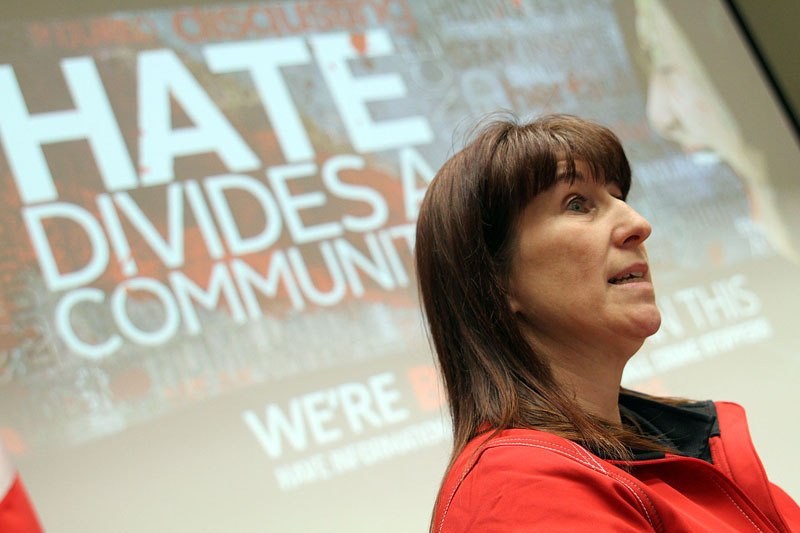Coun. Paul Pugh says hate crimes are preventing Thunder Bay from building a city.
Andy Hay, the deputy chief of police, says silence equals acceptance.
Across the city, others said enough is enough.
On Thursday, with an goal of stopping hate crimes in their tracks, creating awareness of a growing problem and hoping to give residents of the city the fortitude to come forward and report incidents when they happen, Thunder Bay took an important step forward in a battle that’s plagued the it for decades.
Surrounded by police and other community leaders, the Thunder Bay Hate Crimes Awareness Committee unveiled The Hate Divides a Community campaign, a grassroots response that grew out of concerned citizens like Ron Kanutski’s concern for safety in the city.
Kanutski went public late last year, after a violent alleged race-based sexual assault began stirring up negative feelings throughout the community, levelling a storm of criticism at Thunder Bay police, claiming cops weren’t doing enough to solve the crime.
“He was very upset about violence in the community, particularly violence against women and racism-based violence,” said Crime Stoppers Isabel Ferguson.
With the added influence of Const. Larry Baxter, the genesis of the campaign began in earnest. And it was high time, Ferguson said.
“We can’t turn a blind eye to what’s going on around us,” she said. “Change happens when we make it happen, and together we can make it happen.”
Baxter, the police department’s Aboriginal liaison for the past six years, said he’s been hearing stories for years about what’s really going on in Thunder Bay.
But seldom did he see racially motivated crimes cross his desk to investigate.
“I always wondered why they weren’t being reported,” said Baxter, a featured speaker at the campaign launch, held at City Hall.
“As I did more research, the research indicated only 1-in-10 hate motivated crimes are reported, for a variety of reasons.”
Fear of retribution and a lack of faith the system works are the two most often stated reasons why these type of crimes go unreported.
While December’s incident put the issue in the forefront, Baxter said he’s been pushing for a plan for years.
“This issue, at the police service, we recognize it, because across Canada there is no real uniform definition of what a hate crime is,” he said.
This just adds to the confusion.
Often people hear hate crime and automatically think Ku Klux Klan or Aryan Brotherhood.
“But it’s the little things that sometimes we miss that create a big impact. It could be a person, whether he’s gay person or a person of a certain minority. If they’re targeted and it’s found the motivation is because of bias or hatred during an investigation (that’s where we have to act),” Baxter said.
Police spokeswoman Julie Tilbury said the will of the community is there. The campaign is just added motivation, she added.
“We need to all stand up together as a collective. We need to energize people in communication,” she said.
The time for sitting idly by has past.
“If you see something happening, please stand up.”
Crime Prevention Council co-ordinator Amy Siciliano said the next steps are introducing the campaign and accompanying video, into local schools, and looking at other ways to move the spirit of Kanutski’s dream forward.
And it will happen on the ground, with solutions brought forward by the people it most affects.
“The first thing we have to do is just raise awareness about this, let people know there is a place to report it, that we’re doing something about it, that we’re tracking what’s happening in our community,” she said.
When all is said and done, Siciliano hopes the people of Thunder Bay will simply say hate-based crime has no business in society whatsoever.
Mending fences won’t happen overnight.
But it can be done.
“I think it’s a really good step in the right direction. I think we have to talk about what’s happening and we have to encourage people to come forward and say, ‘This is happening to me. I need to report it and I know when it’s reported something is going to get done.”
